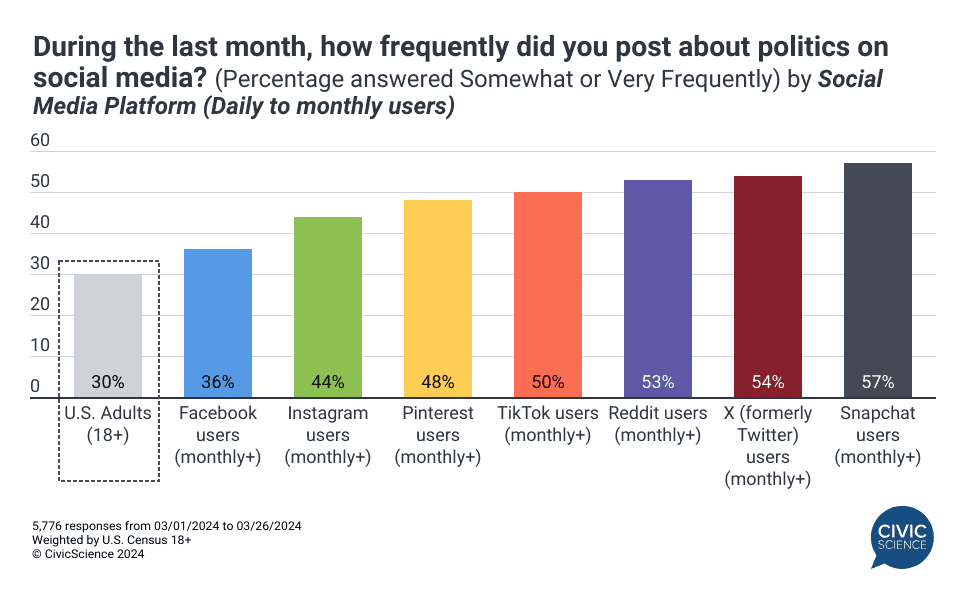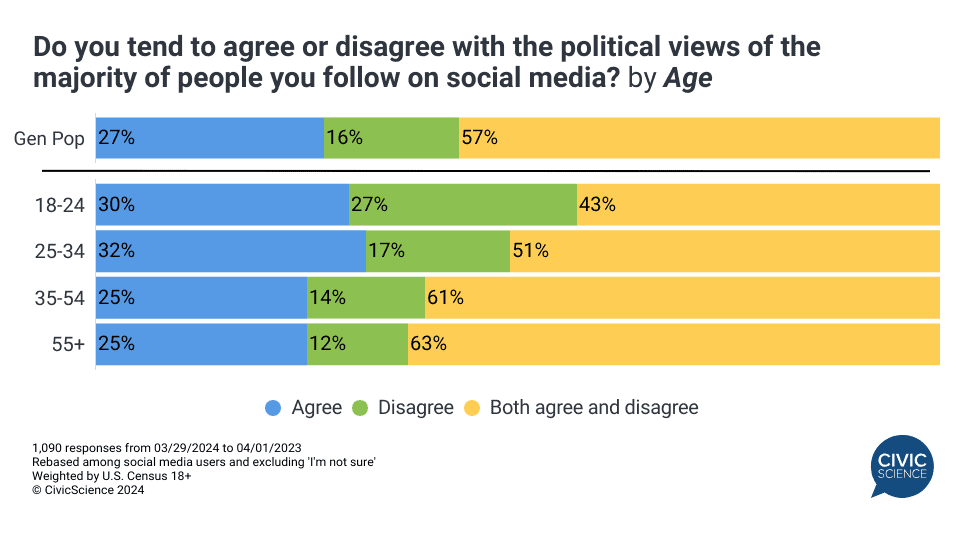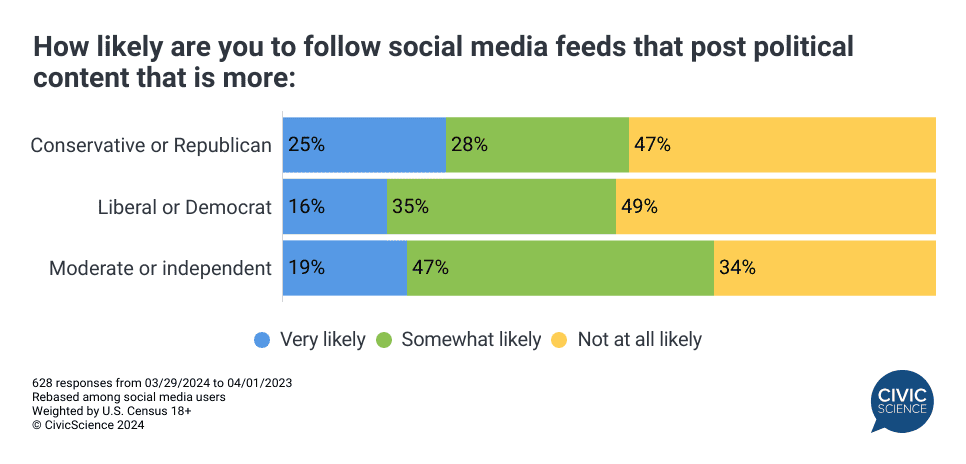Everyone who has used social media in the past decade has likely seen political posts show up in their feed, posted their own political content, or (regrettably) taken part in political arguments online. As the 2024 presidential election nears, how many are now turning to social media to post about their political views?
New data from the CivicScience Election Tracker find that most political discussions are happening offline. Thirty percent of U.S. adults say they posted about politics ‘somewhat’ or ‘very’ frequently on social media in the last month, the same percentage as in January of this year.
However, users of certain social media platforms are far more likely than others to post about politics. Snapchat ranks highly for political content posters, followed by X (formerly Twitter). On the other end of the spectrum are Facebook and Instagram, with TikTok solidly in the middle.

Join the Conversation: How often do you engage in political discourse on social media?
It’s no surprise that such a wide gap exists between Facebook and X users, bringing the debate over content moderation to the fore. In the last few years, Meta has enacted policies to regulate how political content appears on its platforms, while Elon Musk has moved Twitter/X away from moderation. Americans remain divided on how much control social media companies should exert over user content, although the majority side with companies having the final say.
As SCOTUS reviews lawsuits over moderation, a percentage of Americans are still turning to social media to make their political views heard, but to what extent are they just preaching to the choir (i.e., posting to a social media bubble who share the same political views as their own)?
By the numbers, posting about politics online had a major impact on social media users during the run-up to the 2020 election – 61% of users said they had unfriended, unfollowed, or blocked someone on social media due to their political viewpoints. Unsurprisingly, social media users today are more likely to surround themselves online with others who share their political views – 27% say they tend to ‘agree’ with the political views expressed by the majority of people they follow, while 16% ‘disagree’. However, far more users remain somewhere in the middle, as 57% say they both ‘agree and disagree’ with the politics of those they follow on social media (at least with those who post political content).
Generational differences exist. Younger users are far more likely to follow others who post content that they either ‘agree’ or ‘disagree’ with, while older users are more likely to follow a mix of varying perspectives.

When it comes to what kind of political content users follow, right-leaning political content receives the strongest thumbs up. Twenty-five percent of U.S. adults said they are ‘very’ likely to follow feeds that post conservative or Republican content, compared to 16% for liberal or Democrat content. X users are more likely than Facebook users to follow conservative content (42% to 30% being ‘very’ likely).
But it’s moderate content that has greatest overall appeal – 66% report they are at least ‘somewhat’ likely to follow feeds that post moderate or independent content, more than ten points higher than conservative or liberal.

The social media sphere is complex and in a state of flux. Although it’s still a place for political content, the landscape already looks different from the last presidential election. Facebook is less likely to be the same hotbed of political posts, while X is more poised to fill that space. But what’s clear is that the majority of Americans are not interested in using social media to air their political views during this election cycle, at least not right now.
Take Our Poll: Have you ever stopped following a friend on social media because of their politics posts?
For more insights about what the upcoming election means for people, markets and the economy, download a free preview of the CivicScience 2024 Election Mindset Tracker. To learn more about how CivicScience solutions can help your brand stay ahead of the curve with forward-looking consumer data, get in touch.








